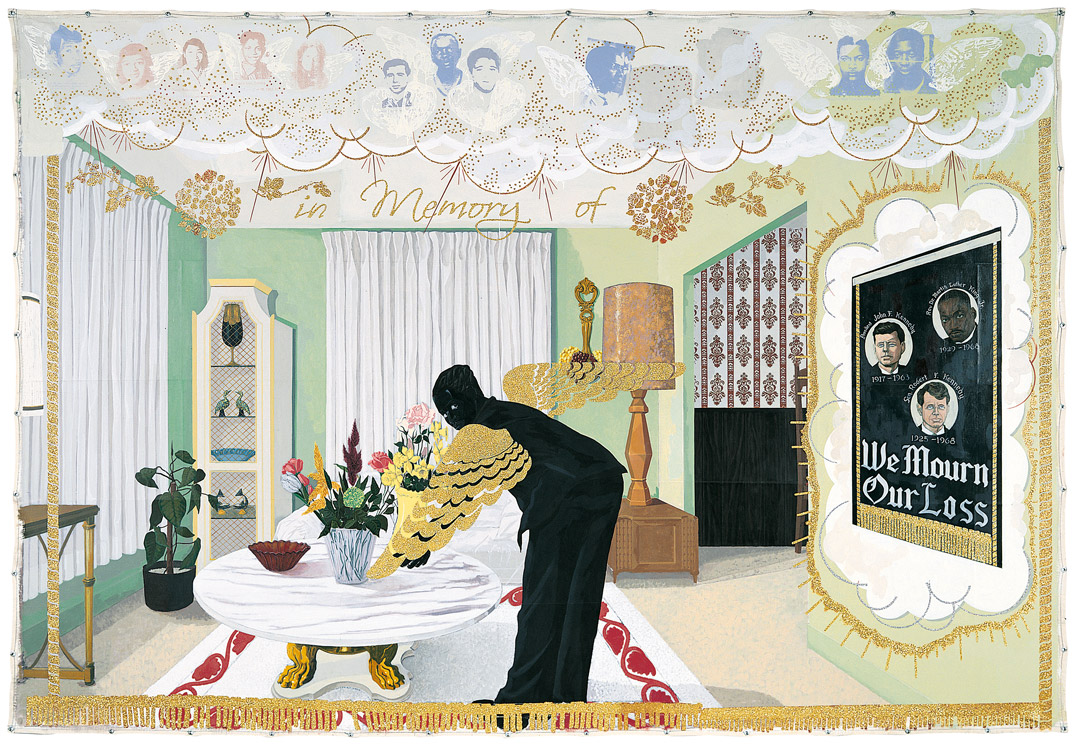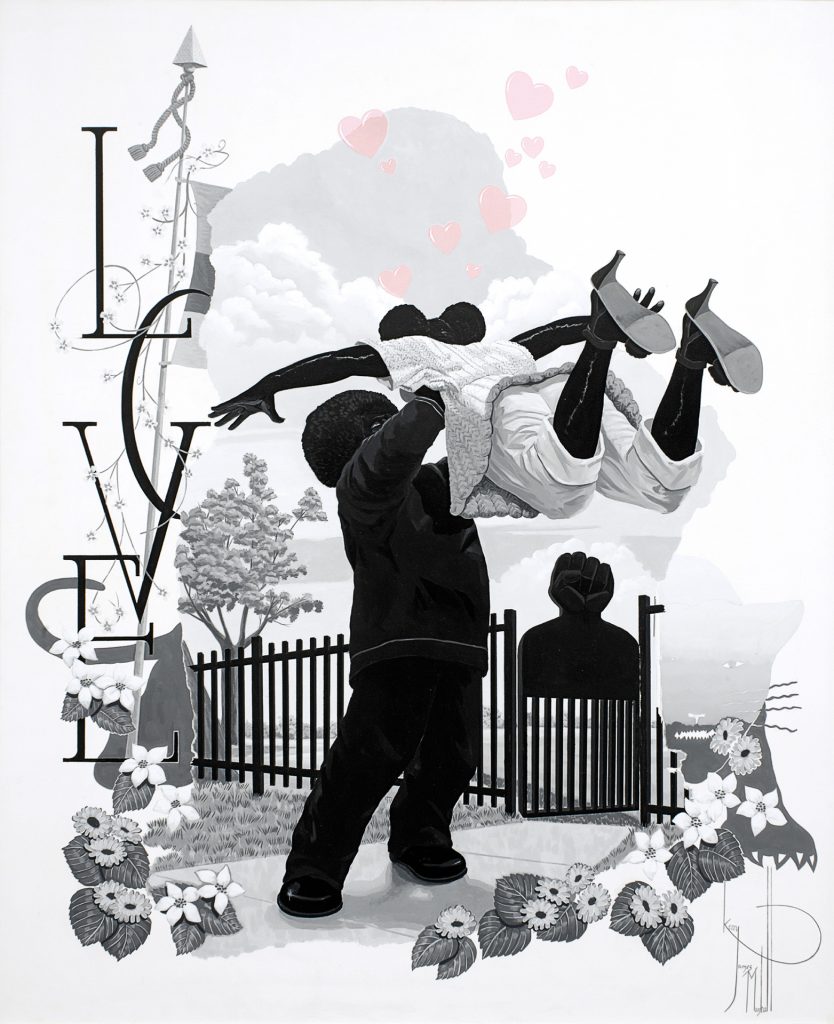School of Beauty, School of Culture
Kerry James Marshall
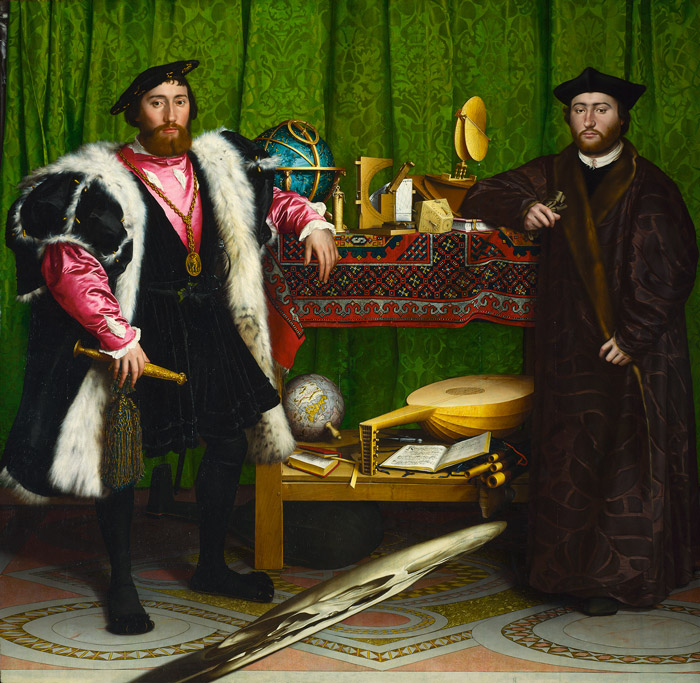
The Ambassadors, 1533, Hans Holbein the Younger, © National Gallery, London / Art Resource, NY
A famous example of art-historical painting, Hans Holbein the Younger’s double portrait, The Ambassadors, shows two friends amid an array of detailed artifacts from art and science. Within this celebration of human accomplishment, hiding in plain sight, is a distorted skull—a mememto mori, a reminder of the inevitability of death.
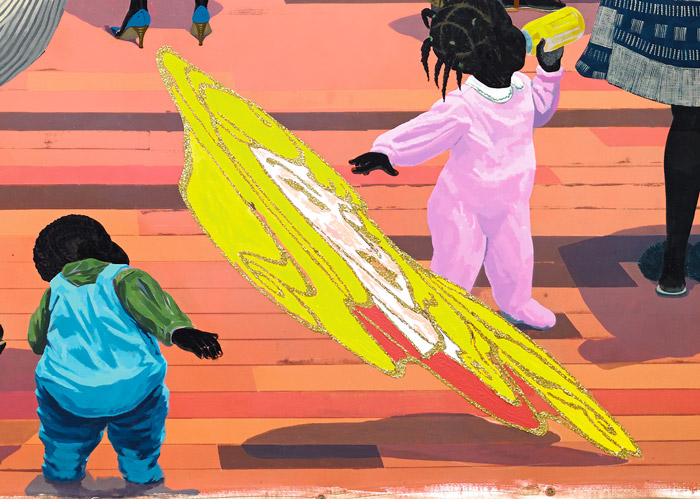
School of Beauty, School of Culture (detail), 2012, Kerry James Marshall
"I am overwhelmed by white figure representations every time I go to a museum. It is almost universally understood that these images are the foundation of art in the western world."
– Kerry James Marshall
Marshall replaces the skull from Hans Holbein the Younger’s painting, The Ambassadors, made in 1533, with a Disney-esque image of a young blonde woman. As a parallel for the skull in The Ambassadors, which reminds us that death lurks in the midst of human vitality, this distorted head is a reminder of dominant notions of beauty within the buzzing activity of the Black beauty parlor.
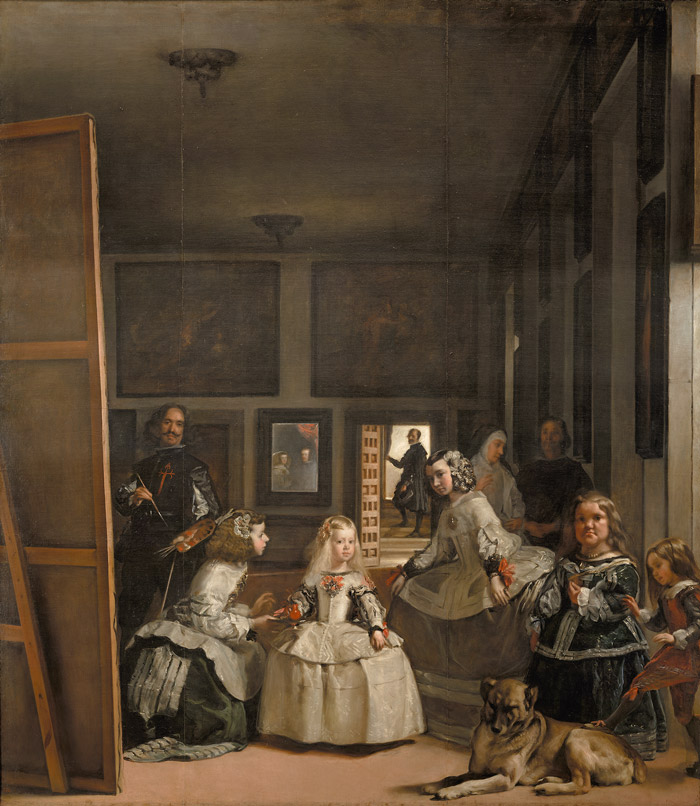
Las Meninas, 1656, Diego Velazquez, © Photographic Archive Museo Nacional del Prado
This 17th-century painting is a triple portrait whose main subjects—the Spanish King and Queen—appear dimly reflected in a mirror. More clearly represented is the artist at work, half-hidden behind a canvas. Next to him, the young princess becomes the central figure. This painting’s unusual point of view questions the role of the viewer and who is looking at whom. In School of Beauty, School of Culture, Kerry James Marshall inserts the flash of his camera in the mirror behind the woman posing for the picture, to similar effect.
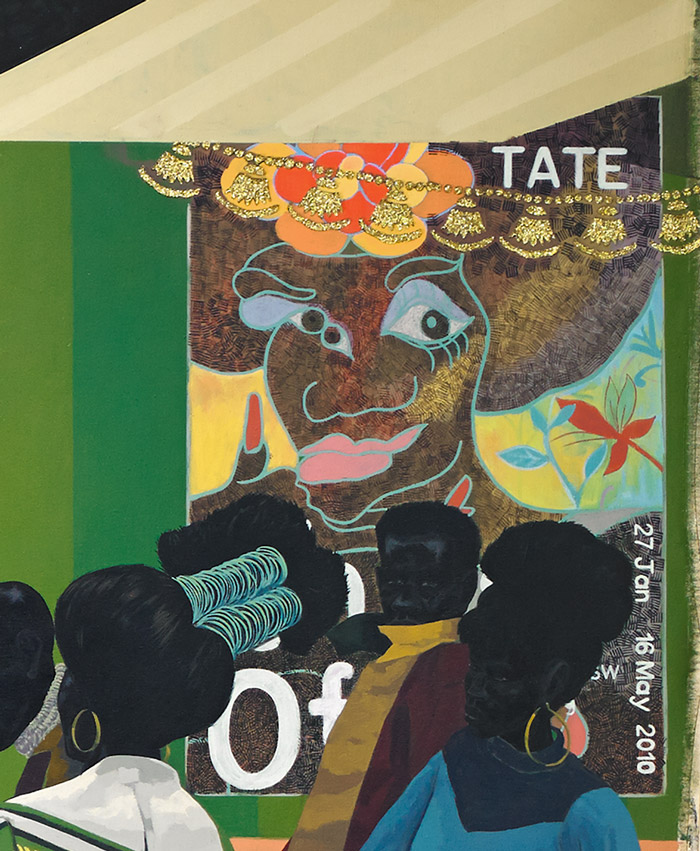
School of Beauty, School of Culture (detail), 2012, Kerry James Marshall
This is a poster for a Chris Ofili exhibition at the Tate Britain in 2010. Winner of the Turner Prize, Ofili is an acclaimed Black contemporary artist whose paintings combine the sacred with the profane, the historical with pop culture. Marshall is creating a Black iconography by including his contemporary.
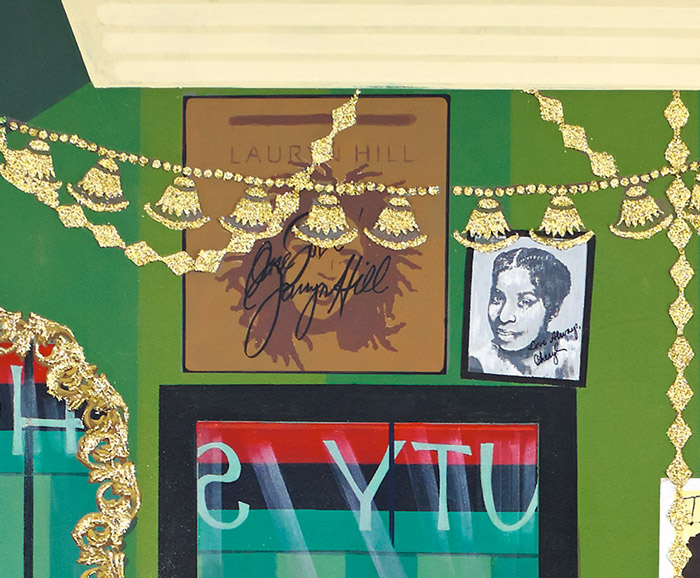
School of Beauty, School of Culture (detail), 2012, Kerry James Marshall
"If you look around the museum you notice there's an absence of Black figures. I don't expect those people to have made pictures of me because I wasn't part of that culture and I wasn't part of that history. . . . I have to be able to project my self image in such a way as I can guarantee myself a place on these walls."
– Kerry James Marshall
An autographed poster of singer Lauryn Hill.
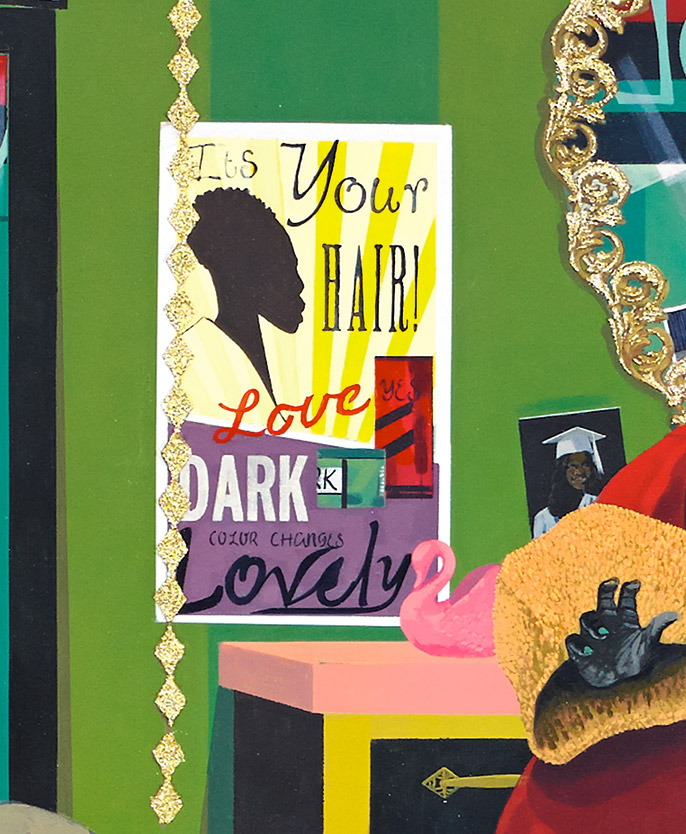
School of Beauty, School of Culture (detail), 2012, Kerry James Marshall
The Black Is Beautiful movement began in the 1960s. It rejected the social and historical idealization of white beauty, and turned the negative perceptions of Blackness into a celebratory one.
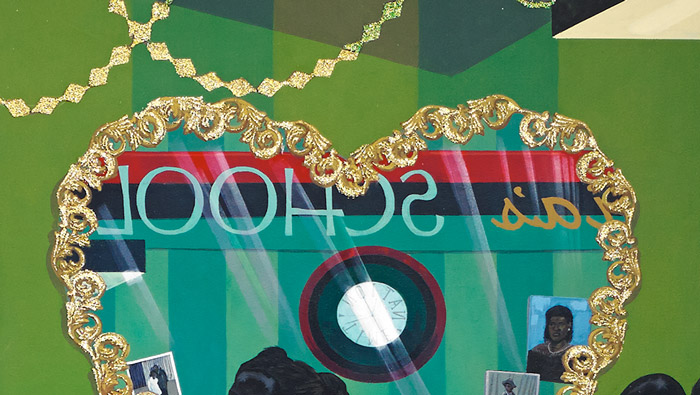
School of Beauty, School of Culture (detail), 2012, Kerry James Marshall
According to the Universal Negro Improvement Association and African Communities League, "the three Pan-African colors on the flag represent: red: the blood that unites all people of Black African ancestry, and shed for liberation; black: black people whose existence as a nation, though not a nation-state, is affirmed by the existence of the flag; and green: the abundant natural wealth of Africa."
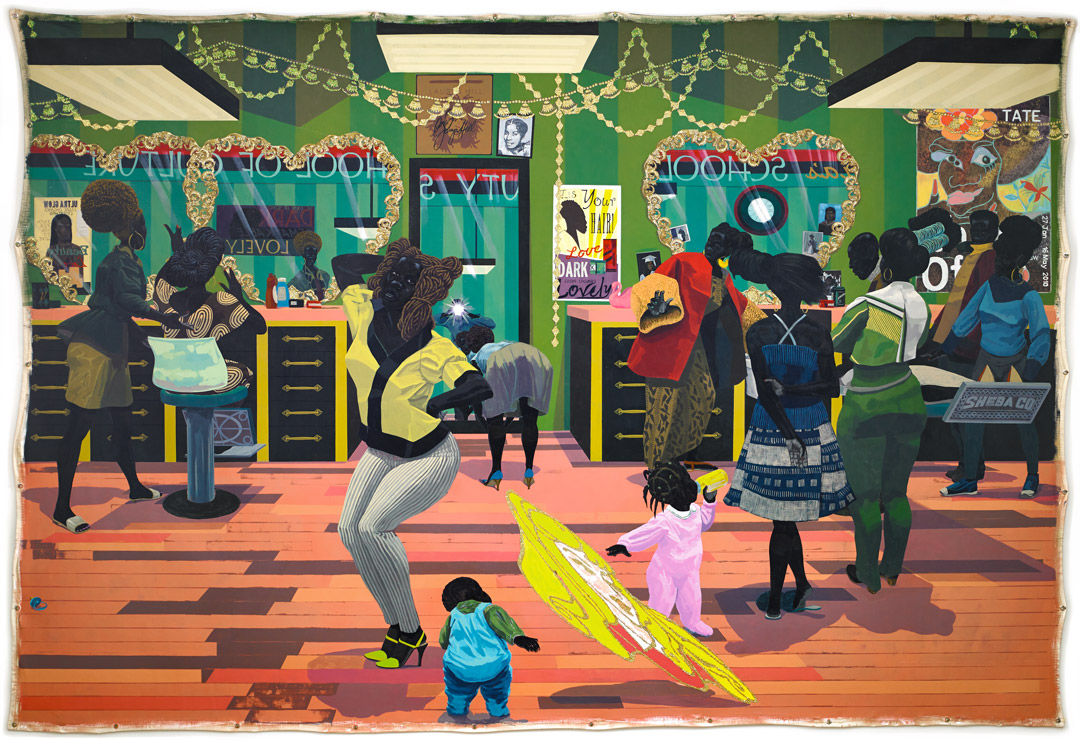
More Kerry James Marshall
Images: School of Beauty, School of Culture, 2012, Kerry James Marshall, acrylic and glitter on unstretched canvas, 108 x 158 in., Birmingham Museum of Art, Museum purchase with funds provided by Elizabeth (Bibby) Smith, the Collectors Circle for Contemporary Art, Jane Comer, the Sankofa Society, and general acquisition funds, 2012.57, © Kerry James Marshall. Souvenir I, 1997, Kerry James Marshall, acrylic, collage, and glitter on unstretched canvas, 108 x 157 in., Collection Museum of Contemporary Art Chicago, Bernice and Kenneth Newberger Fund, 1997.73, © MCA Chicago, photo: Joe Ziolkowski. Vignette #2.75, 2008, Kerry James Marshall, acrylic on PVC panel, 73 ¼ x 61 in., The Art Institute of Chicago, Through prior gift of Adeline Yates; Benjamin Argile Memorial, Cyrus Hall McCormick, Alfred and May Tiefenbronner Memorial, Mr. and Mrs. Frank G. Logan Prize, Pauline Palmer Prize, Broadus James Clarke Memorial, Norman Wait Harris Prize, William H. Bartels Prize, Joyce Van Pilsum, Laura T. Magnuson Acquisition, Ann M. Vielehr Prize, and Ada S. Garrett Prize funds; Flora Mayer Witkowsky Award for American Art; Boles C. and Hyacinth G. Drechney and Mr. and Mrs. J.F. Brower Prize funds; The Municipal Art League Prize for Portraiture; Marjorie and Louis Susman, Martin B. Cahn Prize, and Elisabeth Mathews funds, 2008.481.4, © Kerry James Marshall, The Art Institute of Chicago / Art Resource, NY.



